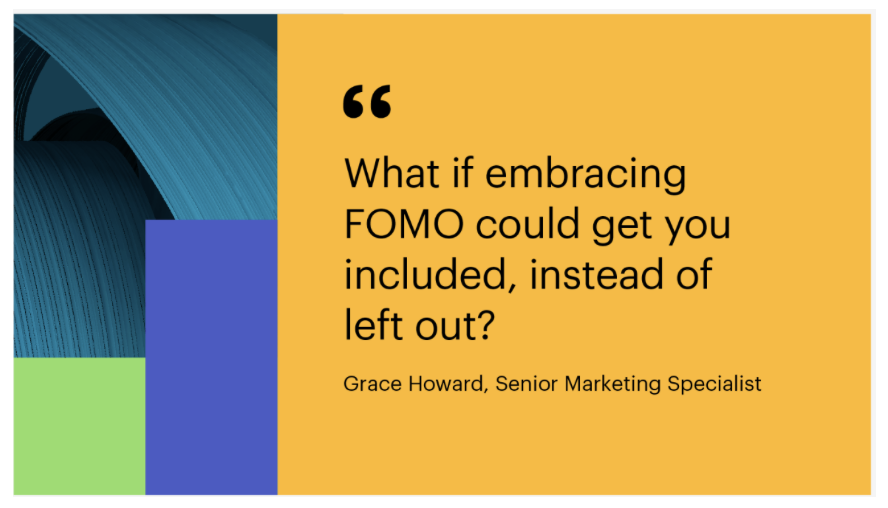Welcome to the second installment of our ABM Campaign Crash Course series. In our premiere post, we had an in-depth discussion and a step-by-step guide on display ads. Today’s course is going to get personal. Don’t worry, no deep dark secrets, just our in-depth look at ABM content personalization and a few secrets on how to leverage personalization for optimal campaign results.
What is personalization?
Personalization is the practice of creating relevant and customized content that speaks directly to your target audience. Instead of one-size-fits-all content, personalization allows you to make small tweaks to your content unique to the account(s) you’re engaging with. According to a HubSpot study, the most common challenge with ABM is delivering a personalized experience.
Why personalize?
Content personalization helps marketing campaigns by increasing engagement and conversions. According to HubSpot, personalization is the #1 tactic used by email marketers to increase engagement. Another study by Epsilon found that 80% of consumers are more likely to make a purchase when companies offer a personalized experience. Foundry found that personalized messaging converts 20% more qualified leads. Consider this… You walk into a gift shop and stumble upon the gift section with magnets, glasses, and other knick-knacks with a plethora of names on them. You stop to try and spot the one with your name on it. When you finally spot it, you pick it up and check it out. Maybe you buy it, maybe you don’t. However, you either did or contemplated making the purchase because it was personalized and unique to you. Now let’s think big picture. Whether it’s selling gifts in a gift shop or a B2B marketer driving awareness to your company’s financial management software, your audience is more likely to engage when the messaging is unique to their needs.
How to Deliver a Personalized Account-Based Experience
Step 1: Develop an ideal customer profile
What is an ICP?
An ICP is a hypothetical description of the type of buyers in your market that would benefit most from your product or service. Ideal customer profiles help your marketing team get a picture of exactly who you’re creating content for. This way you can cater messaging to the audience you’re engaging with, giving the content a personalized feel. ICPs are defined by factors including their relative career stage, their familiarity with your service offerings, their pain points, and their motivation. Here’s an example of ICP buyer persona for a SaaS company:
- Tech Newbie
- Software veteran
- Revenue-oriented buyer
Here we might say that the ‘Tech Newbie’ is the earliest in their career, not familiar with your service offerings, and their pain points may be issues like learning the systems they work in, lack of efficiency in their workflows, and more. A Revenue-oriented buyer on the other hand, will be motivated by different pain points and goals– they would likely worry about project ramp time, and the length of time a program will need to show revenue impact. By defining your ICPs, you are able to tailor your content to who they are and what interests them and in return, they’ll be more likely to engage with your content.
Step 2: Address their pain points
With your ICPs planned out, you can create content pieces that address the pain points of your personas. For example, continuing with the ICP examples we laid out above, let’s address each of our personas. The first contact you’ve identified isn’t very familiar with the software you’re offering, nor very tech-savvy. In this scenario, you shouldn’t get into the weeds right away. You should start where they are, which is generally that they’ve identified a problem, but don’t yet know how to solve it. You’ll want to create content that discusses problems that they face, and helps to guide them to solutions, and in turn, through the buyer’s journey. Focus on content that is going to nurture buyers who want to learn more. Let’s hit on three key points when addressing the scenario of the Tech Newbie:
- Briefly explain what your product does
- Keep it simple
- Have a clear message and visuals
Software Veteran contacts are going to want to know the specs, the data, the integrations, and the core of your product. Common pain points for this persona include tech stack compatibility and tech-strategy alignment. When addressing this persona focus on…
- Marketing and sales integrations
- How your product can scale their strategy
- Overall platform performance
Last but not least, the Revenue-oriented buyer wants to see the numbers. Common pain points for this persona include a downward trend in revenue, lack of growth, and a limited budget. When addressing this persona focus on…
- Cost
- ROI
- Proven success from reputable sources
By defining and using ICPs, you can inform your marketing & sales team strategy for each step of the buyer’s journey.
Step 3: Create content that speaks to them
Now that you have defined buyer personas you can make content focused on who you want to target. When planning and creating content, identify which ICP would benefit most from the piece of content you are creating. Then, personalize the buyer experience.
Personalized content
- Display Ads
Display ads can be personalized to speak directly to the pain points of potential customers. Use display ad targeting to segment accounts and contacts. For example, if an ad speaks most effectively to the pain points of a Revenue-oriented buyer, you can target them by job title / level, or by contact-based targeting. For more on this, check out our ABM Campaign Crash Course on Display Ads blog with everything you need to know about account-based display ads.
- Blogs
Blogs give marketers a lot of freedom to address pain points and can be widely shared. With blogs, try picking one or two pain points from one of your personas and address the unique pain points thoroughly. Blogs can then be valuable pieces of content for use in segmented email marketing, outbound prospecting, and more.
- Case Studies
Although the content of customer stories aren’t personalized, you can use them most effectively by personalizing your buyer’s journey with customer stories that best speaks to each persona. Match personas to the case studies using pain points, by company industry, by job title, or service offering.
- 1:1 Landing Pages
Personalized web pages are a great way to curate content in a digestible form for your ICP. Webpages give you a lot of freedom in the content you upload and the specific messaging you want to use. Once you’ve done the hard work of creating all this content that speaks directly to your target audiences, all you need to do is make sure it gets in front of them. A 1:1 landing page is a way to mix and match content for your ICPs in a way that feels personal and high-value.
- Website Personalization
Apart from 1:1 landing pages, it can help to personalize existing elements of your website. To ensure a seamless experience, it can help to personalize your website to match the messaging you are employing for a targeted audience. Learn more about website personalization examples on our blog.
Step 4: Segment your accounts
One of the biggest advantages of personalized content is the ability to reach buyers with content aimed at their position in the purchase journey. If you know accounts in pipeline respond best to certain pieces of content, you can set up fully automated and orchestrated ABM campaigns that will nurture buyers depending on their position in the purchase journey. Let’s break the purchase journey into three sections you can segment content into.
- Awareness stage
The awareness stage is full of top-of-funnel content addressing early pain points your potential buyers may have. At this stage, education is key.
- Consideration Stage
Your customer is evaluating options at this stage. The best content at this point in the purchase journey is content illustrating what separates you from your competitors.
- Decision Stage
The decision stage needs to show a proven track record. This is where customer stories can be the icing on the cake. Think of customer stories as a form of word-of-mouth marketing. Customers can hear from sources in a similar position as themselves explain their experience with a product and that can be powerful. (Here’s a great resource to learn how to plan and create content for every stage of the funnel – Creating Content for Each Stage of the Buyer’s Journey, HubSpot.) Over time you will have accumulated a ton of valuable content that can be curated for certain audiences and repurposed for new audiences. When you segment and personalize the content you show to your audience, your accounts have more meaningful experiences.
Conclusion
Delivering a personalized experience is paramount to a successful ABM program. Speaking directly to your audience and addressing their pain points can make that initial contact with sales come much sooner. Defining your organization’s ICPs makes content personalization more purposeful, and eventually, you’ll have enough content curated to nurture buyers throughout the entire purchase journey. Stay tuned for our next ABM Campaign Crash Course tackling intent data and see how these valuable insights can supercharge your sales and marketing efforts.
Ready to personalize? Learn more about web personalization for ABM.




